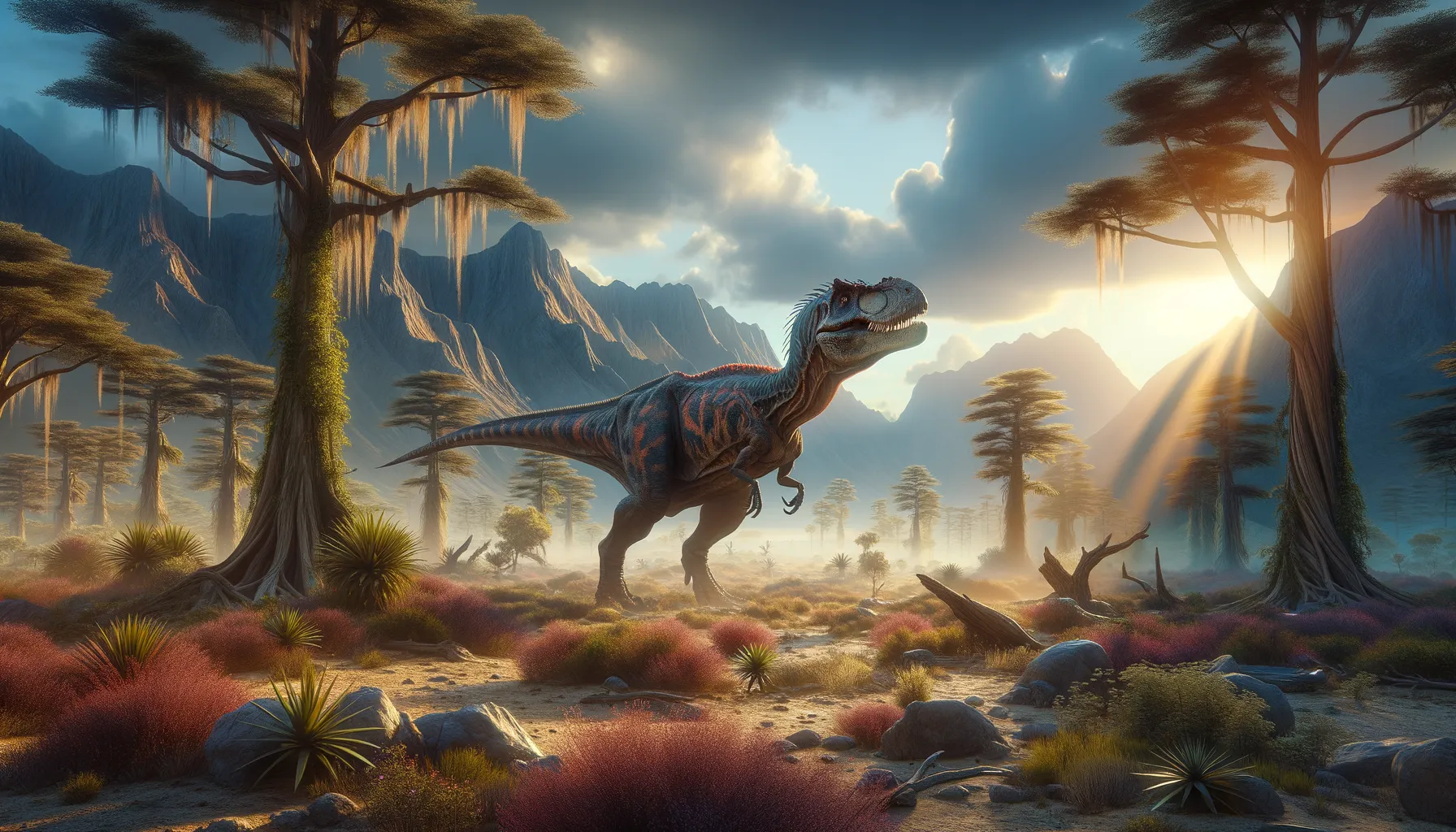
Vitakrisaurus
Unearthing secrets of prehistoric Pakistan.
Period
Cretaceous
Length
Estimated at about 4.5 to 5 meters long.
Height
Approximately 2 meters at the hip.
Weight
Possibly around several hundred kilograms.
Vitakrisaurus, a relatively lesser-known theropod, roamed the Earth during the late Cretaceous period. Found in Pakistan, this dinosaur is part of the theropod group, sharing distant ancestry with modern birds. Though not much is known about its specific features, Vitakrisaurus adds a vital piece to understanding the diversity of theropods in the region. Its discovery helps paleontologists paint a fuller picture of the ecosystem dynamics during its time.
Diet
Vitakrisaurus was likely a carnivore, preying on smaller animals. It may have scavenged for food or actively hunted like other theropods.
Hunting
Its bipedal nature suggests it was agile, enabling it to chase down prey. It may have used its teeth and claws for hunting or scavenging.
Environmental challenges
Vitakrisaurus lived in a period with fluctuating climates, which would have influenced food availability. Competition with other theropods would have posed significant challenges. Natural predators and changing landscapes also shaped its existence and survival strategies.
Speed
Likely moderate due to its bipedal stance.
Lifespan
Exact lifespan unknown; generally lived several decades.
First discovery
First discovered in the Late Cretaceous rocks of Pakistan.
Fun Facts
- Vitakrisaurus was a theropod dinosaur that lived approximately 70 million years ago during the Late Cretaceous period.
- It was discovered in the Vitakri Formation in Balochistan, Pakistan, which is where it gets its name.
- Vitakrisaurus is thought to have been a carnivorous dinosaur, although not much is known about its diet due to limited fossil evidence.
- Its fossils are often fragmentary, making it a bit of a mystery in the dinosaur world, which sparks curiosity among paleontologists.
- Vitakrisaurus is part of the larger group of theropod dinosaurs, which also includes the well-known Tyrannosaurus rex and Velociraptor.
- Although scientists are still piecing together its story, Vitakrisaurus adds to our understanding of the diverse dinosaur species from the ancient world.
- The discovery of Vitakrisaurus highlights the importance of exploring lesser-known fossil sites, which can reveal new species and evolutionary insights.
Growth and Development
Like other theropods, it likely grew rapidly, reaching maturity within a few years. Growth rates would have been influenced by environmental factors and food availability. Its development was probably typical of theropods, with relatively fast skeletal growth.
Habitat
Vitakrisaurus inhabited what would have been a diverse ecosystem with rivers and forests. The environment supported a variety of flora and fauna, providing ample food sources. It lived in an area that would have been humid and warm due to its geographic location.
Interaction with other species
It interacted with other theropods and possibly herbivorous dinosaurs. These interactions were likely competitive, especially when resources were scarce. Symbiotic relationships with certain species may have occurred to mutual benefit.
Natural lifespan
Vitakrisaurus likely lived several decades in the wild.
Reproduction
Reproductive strategies possibly involved laying eggs in secured environments. Breeding rituals might have included displays or calls to attract mates. Nesting sites would have been chosen for protection from predators.
Social behaviour
Possibly lived solitary lives or in small groups, cooperating during hunts. Social interactions might have included communication through vocalizations or postures. Group behavior could have provided advantages in defense and hunting.
Fossil locations
Fossils predominantly found in Pakistan, providing crucial insight into local dinosaur fauna. Discoveries in the region help understand the spread and diversity of theropods. Most significant findings are from the Late Cretaceous sedimentary deposits.
